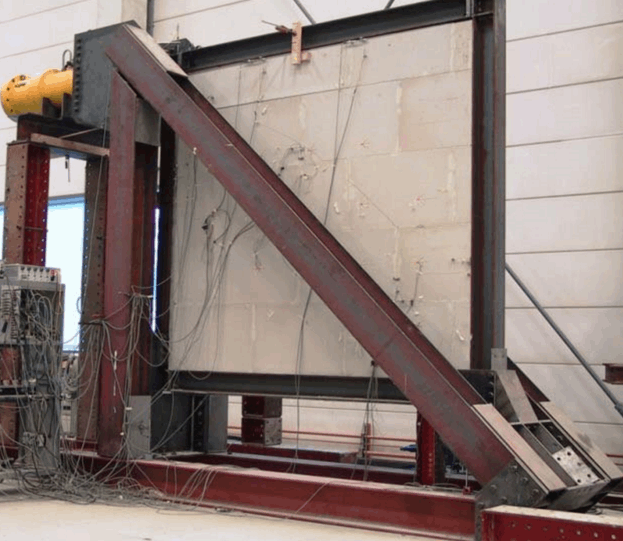B.M. Ng’andu1, A.T. Vermeltfoort2 and D.R.W. Martens3
- PhD researcher, Dept of Structural Design and Construction Technology, Eindhoven University of Technology, Vertigo 9.30, Postbus 513, 5600 MB Eindhoven, the Netherlands, b.m.ngandu@bwk.tue.nl
- Assistant Professor, Dept of Structural Design and Construction Technology, Eindhoven University of Technology.
- Professor, Dept of Structural Design and Construction Technology, Eindhoven University of Technology.
ABSTRACT
This paper describes and presents results of an experimental programme investigating the structural response of steel frames infilled with walls constructed of calcium silicate elements (CASIELs) in thin-layer mortar. This type of wall is increasingly employed in wall construction in Europe. Each of ten 3 m by 3 m steel infilled frames was subjected to an in-plane monotonic horizontal load at the roof beam level. The variables investigated were the presence of an initial gap below the roof beam, the frame-to-wall stiffness ratio and the influence of a top corner bearing wedge. Measurements included rigid body movements, gaps and slips at frame-wall interfaces as well as at selected joints, and strains at selected sites on the walls. Loaddeformation curves show a three stage response prior to cracking. In general, there is an initial stiff stage before a transition stage during which frame-wall separation occurs. This is followed by another stiff linear load-deflection primary stiffness range leading to diagonal tension cracking. When shear cracking along the bed joint below the topmost CASIEL layer occurs, the infilled frames more or less instantly recover their stiffness. An initial top gap results in large deflections during the transition phase and a reduced primary stiffness although it does not reduce the cracking load. Increasing the frame-to-wall stiffness ratio increases the primary stiffness and the diagonal cracking load. By using a bearing wedge at the top corners, the influence of the top gap is significantly reduced. This may be significant in developing a construction technique for industrial application of infilled frames. The global responses, together with the strain distributions derived from rosette measurements on the walls provide a data base for calibration of a finite element model.
KEYWORDS: infilled frames, CASIELs, thin layer mortar, stiffness, bearing wedge
8b-1



